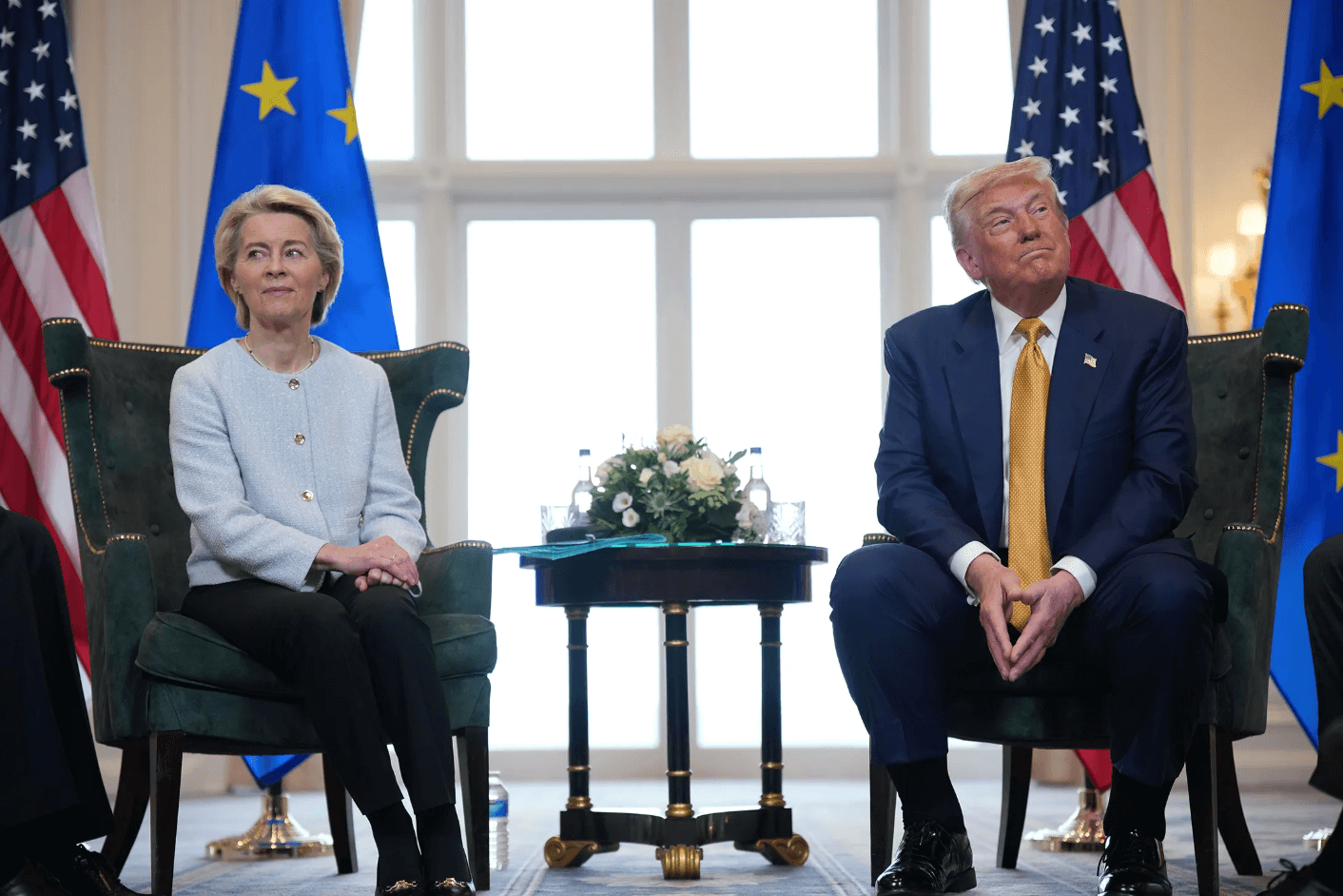- Conservative Fix
- Posts
- Euro Climbs As Trump Strikes Framework Trade Deal With EU
Euro Climbs As Trump Strikes Framework Trade Deal With EU
Agreement cuts tariffs and secures massive European investments in U.S. energy and infrastructure.

The euro gained ground on Monday following the announcement of a new U.S.-EU trade framework deal, signaling increased optimism among investors and a boost in transatlantic economic cooperation.
President Donald Trump and European Commission President Ursula von der Leyen unveiled the agreement during a meeting in Scotland on Sunday. The deal slashes previously threatened tariffs and secures hundreds of billions in European investment into the United States.
“We are agreeing that the tariff straight across for automobiles and everything else will be a straight-across tariff of 15%,” Trump declared. “So we have a tariff of 15%. We have the opening up of all of the European countries, which I think I could say were essentially closed.”
Von der Leyen confirmed that Europe will purchase $150 billion in U.S. energy and commit another $600 billion in American investments, marking one of the largest economic arrangements between the two allies in recent years.
Key elements of the U.S.-EU trade deal:
A 15% flat tariff on EU goods entering the United States half of the 30% that Trump initially threatened.
$150 billion worth of U.S. energy purchases by Europe, bolstering American oil, gas, and renewables industries.
$600 billion in additional EU investments aimed at U.S. infrastructure, manufacturing, and technology sectors.
By early Monday, the euro had risen to $1.18, reflecting renewed confidence in European markets. Financial experts say the deal eases uncertainty and encourages investment on both sides of the Atlantic.
Rodrigo Catril, senior currency strategist at National Australia Bank, remarked, “Now that there is more clarity, you would think that not only in the U.S., but around the globe, there will be a little bit more willingness to look at investment, to look at expansions, and to look at where the opportunities are.”
The U.S.-EU framework closely mirrors Trump’s $550 billion trade deal with Japan, announced last week, which also set tariffs at 15% on cars and other imports while expanding Japanese investments in U.S. industries.
Senior U.S. officials are set to meet with Chinese negotiators in Stockholm later Monday, hoping to extend a trade truce before an August 12 deadline for a permanent trade pact. Analysts say another 90-day extension of the truce, originally struck in mid-May, appears likely.
The U.S. dollar, while strong on Friday due to robust economic data, may face mixed movements this week as central banks take the spotlight. Both the Federal Reserve and the Bank of Japan are expected to hold interest rates steady, with markets closely watching for signals on future policy moves.
Trump’s latest trade victories are fueling optimism among investors and business leaders, reinforcing the administration’s strategy of securing better deals for American industries.
Share this article and subscribe to our newsletter for the latest updates on Trump’s trade negotiations and global market trends.